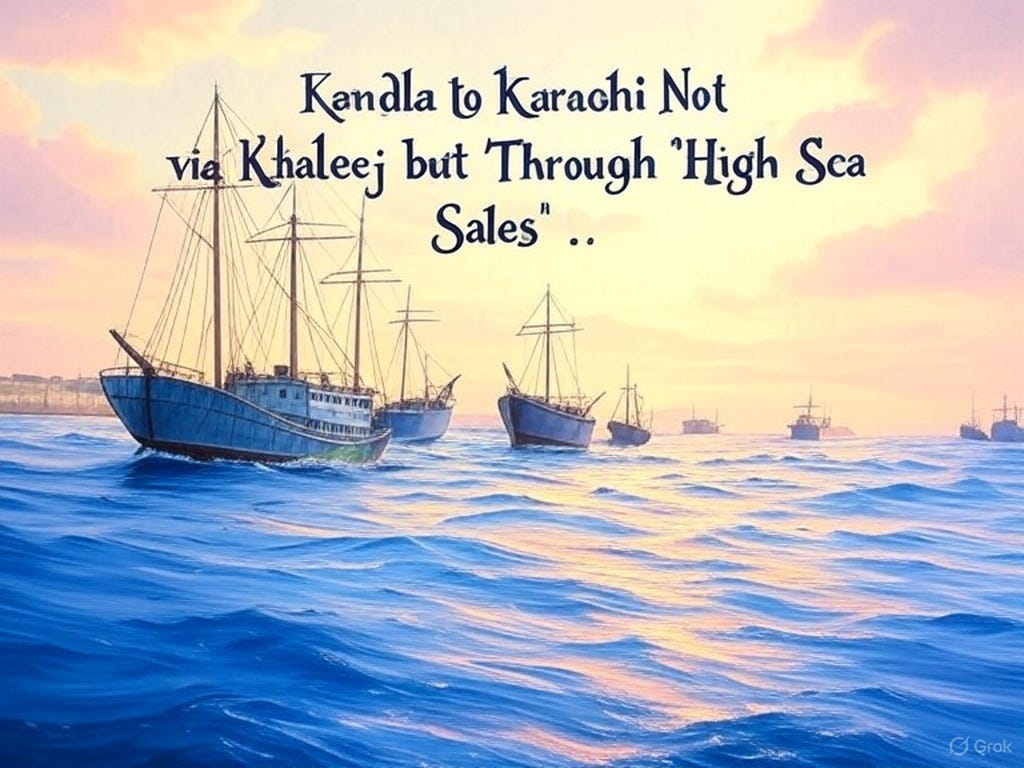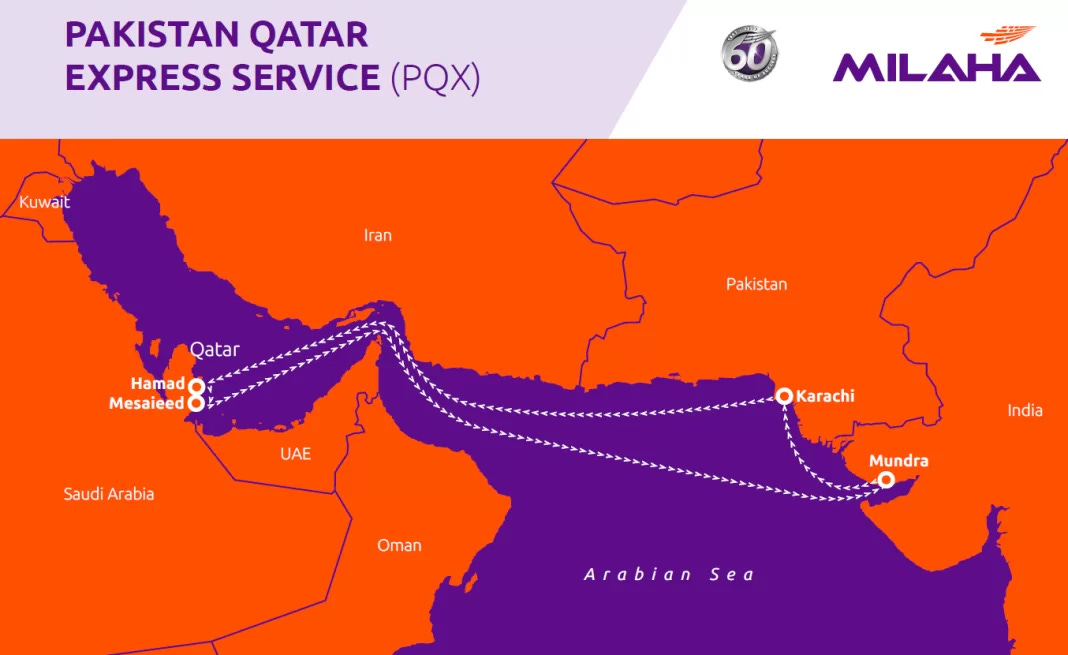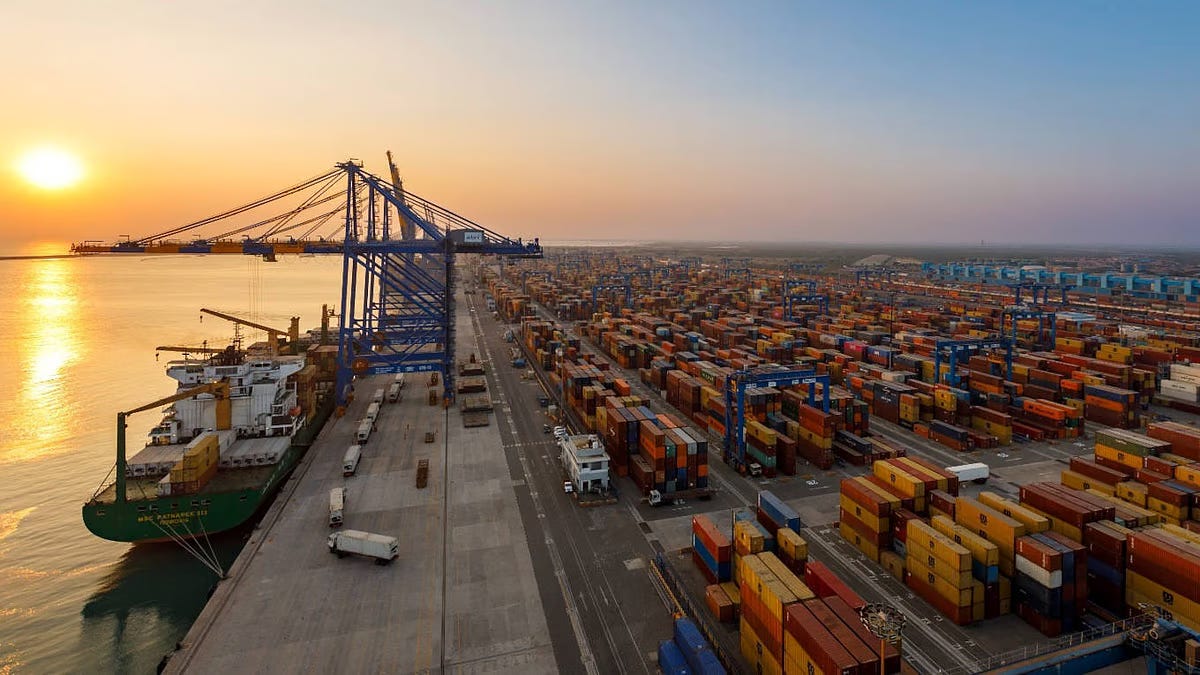Kandla to Karachi Not via Khaleej but Through "High Sea Sales"
High Sea Sales and the informal corridors that keep Indo-Pak maritime trade alive—without crossing Wagah.
Byline:
By Karan Bir Singh Sidhu
Retired IAS Officer | Former Special Chief Secretary, Punjab | Public Policy Analyst
Indirect Maritime Trade Between Indian Ports and Pakistan: High Sea Sales and Geopolitical Realities
The closure of the Attari-Wagah border on April 23, 2025—announced in the immediate aftermath of the Pahalgam massacre that claimed several civilian lives—has brought Punjab’s Rs 3,886.53 crore annual cross-border trade with Pakistan to a grinding halt. Focused primarily on perishables like vegetables, soybeans, and textiles, this trade has come to a standstill. In sharp contrast, Gujarat continues to maintain commercial links with Pakistan through its ports, particularly Kandla and Mundra, using the innovative yet internationally accepted mechanism of high sea sales (HSS) and third-country transshipment—an economic lifeline that endures even in the absence of formal diplomatic or shipping ties. This rudimentary article explores how Gujarat leverages maritime infrastructure to bypass the geopolitical barriers that have crippled land-based trade.
The Absence of Direct Shipping Routes
1. Geographic Proximity vs. Political Barriers
Despite Kandla Port being just 256 nautical miles away from Karachi, no direct shipping routes currently exist between the two due to post-2019 political tensions. Since the suspension of formal trade ties, vessels no longer travel directly from Gujarat’s ports to Karachi. Instead, goods travel along longer, less efficient paths—such as from Mundra to Jebel Ali in the UAE, and then on to Karachi, a journey that can take up to 17 days. Another common route is from Ahmedabad via Dubai before reaching Karachi. These detours highlight the impact of non-tariff barriers that remain in force despite geographical proximity.
2. Regulatory Hurdles
Pakistan’s suspension of trade with India in 2019 and India’s retaliatory tariff hikes of up to 200% effectively ended formal direct trade. Since 2020, customs data from Kandla Port shows no record of shipments directly to Pakistan. The legal and bureaucratic frameworks ensure that trade on paper appears compliant, even though actual commodity movement tells a different story.
High Sea Sales: The Paper Rerouting Mechanism
1. How HSS Circumvents Direct Trade Bans
High sea sales offer a sophisticated method of circumventing formal restrictions and is otherwise a perfectly legal maritime trade practice. The core idea involves transferring cargo ownership while the goods are still en route on the high seas. Here’s how it typically works in, say, the Gujarat-to-Pakistan context:
Goods are shipped from Kandla or Mundra with documents showing their destination as Dubai or Jebel Ali.
In international waters, a legal transfer of ownership occurs using a "switch bill of lading."
The new buyer—often a Pakistani importer—then reroutes the goods to Karachi, with the documentation now reflecting the UAE as the port of origin.
This method masks Indian origin while keeping the supply chain intact.
2. Case Study: Reactive Dyes
Before the trade ban, Gujarat was exporting nearly 1,000 metric tons of reactive dyes monthly to Pakistan’s textile sector. After 2019, these exports shifted to the HSS system. By 2023–24, approximately 800 MT per month of dyes were still making their way to Pakistan, albeit with new paperwork that traced the shipment through Dubai.
Quantifying Indirect Trade Volumes
1. Formal vs. Informal Channels
Despite the diplomatic freeze, trade between India and Pakistan has not vanished—it has merely transformed in form and channel. A comparison of trade figures starkly illustrates this shift. Prior to the 2019 suspension of formal ties, direct exports from Gujarat to Pakistan stood at approximately $180 million per year. By 2023–24, this figure had surged to an estimated $320 million annually, albeit through indirect routes like high sea sales and third-country transshipment. In contrast, Punjab’s exports to Pakistan—valued at over Rs 3,886.53 crore annually before the border closure—have dropped to zero following the April 2025 shutdown of the Attari-Wagah corridor. This divergence reveals how maritime states like Gujarat have adapted to geopolitical constraints, while landlocked regions remain economically stranded.
2. Key Commodities Traded via HSS
Gujarat continues to export reactive dyes, chemicals, machinery, and plastics through indirect routes. Pakistan, in return, sends goods like dry dates, gypsum, and rock salt. Notably, Dubai acts as the main transshipment hub, handling about 68% of all informal trade between the two countries. Of Kandla’s 132.3 million MT cargo throughput in 2023–24, nearly 12–15%—between 15.9 to 19.8 million MT—was estimated to be rerouted to Pakistan via HSS.
Economic Impact on Gujarat vs. Punjab
1. Gujarat’s Sustained Benefits
Gujarat has been the major beneficiary of this rerouted trade. The state’s ports earn between ₹480–520 crore annually from transshipment fees associated with Pakistan-bound cargo. Chemical exports to the UAE saw a 22% increase between 2022–24, with nearly a third of that estimated to be diverted to Pakistan. Additionally, around 8,000 jobs in Gujarat’s logistics, warehousing, and shipping sectors continue to thrive on the back of this trade.
2. Punjab’s Collapse
In contrast, Punjab has suffered significant economic losses. Perishable goods that once crossed the Wagah border now rot unsold. Previously, over 71,000 passenger crossings per year supported small-scale traders. Now, that figure is zero. Amritsar alone has lost more than 10,000 jobs linked to border trade activities.
Legal and Operational Challenges
1. Customs Scrutiny
To prevent abuse of the HSS system, Kandla Customs enforces a "100% examination" policy on UAE-bound cargo. However, the use of switch bills of lading remains a regulatory blind spot. In 2024 alone, authorities seized 23 consignments worth ₹87 crore that were found to be misdeclared as UAE-origin but were actually headed to Pakistan.
2. Pakistan’s Countermeasures
Recognizing the rising volume of informal trade, Karachi Port has stepped up its scrutiny. In 2023, nearly 14% of shipments suspected of Indian origin were rejected following enhanced origin verification checks.
Asymmetric Trade Resilience
The Wagah-Attari closure has starkly highlighted regional disparities in coping with geopolitical disruptions. While Punjab’s land-based trade has collapsed, Gujarat’s ports have leveraged maritime agility and documentation-based subterfuge to keep commerce alive. An estimated $320 million in annual trade between Gujarat and Pakistan now flows through high sea sales and third-country rerouting, replacing transparency with resilience.
Mundra’s Dominance in High Sea Sales: Ownership and Strategic Proximity
High Sea Sales (HSS) traffic between India and Pakistan is handled predominantly by Mundra Port, thanks to its advanced infrastructure, deep-draft berths, and status as India’s largest private port, owned by the Adani Group. In contrast, Kandla Port—now known as Deendayal Port—is publicly owned and operated by the Government of India, focusing more on bulk cargo than containerized trade. Although Kandla is geographically closer to Karachi (256 nautical miles) than Mundra (279 nautical miles), Mundra’s superior capacity and technology make it the preferred hub for HSS transactions. The two ports themselves are only about 134 km apart, but Mundra’s private ownership and modern facilities give it a clear edge in facilitating complex, indirect trade routes with Pakistan.
The Real Costs of Retaliatory Trade Barriers
Disruptive trade barriers—whether in the form of punitive tariffs like those imposed by President Trump under the misconstrued “doctrine of reciprocity,” or retaliatory bans such as India’s response to the Pahalgam massacre—may be entirely justifiable when viewed through the lens of geopolitics or national security. Yet, while these measures send strong diplomatic signals, they also inadvertently raise the cost of doing business and increase the final landed price of goods borne by end consumers. The real pecuniary beneficiaries of such convoluted trade rerouting are neither the governments nor the common people. Instead, it is the intermediaries—logistics firms, clearing and consigning agents, and often rent-seeking customs and border security officials—who profit from the complexities introduced by such disruptions. Even sovereign governments derive little substantive gain from the incremental revenue generated by imposing astronomical tariffs or enforcing circuitous trade routes.
Meanwhile, the poor labourers at one end of the value chain—especially small traders and transporters in border states like Punjab—and the ultimate consumers of these goods end up bearing a disproportionately high burden. These policy decisions, particularly when abruptly imposed in reaction to cataclysmic events like the Pulwama or Pahalgam killings, deserve more than mere reactive endorsement. They demand a nuanced and informed understanding by both citizens and policymakers.
Winners, Losers, and Strategic Intent
Beyond the immediate fallout, one must also ask: has India’s overarching objective of “punishing” Pakistan—through calibrated trade disruptions and reactive escalations—truly been achieved? Is this strategy merely tactical, serving as short-term pressure in response to regional incidents? Or does it reflect a broader strategic calculus—to redefine trade dependencies, reshape diplomatic narratives, and signal an uncompromising stance on national security? These are the deeper currents beneath the surface skirmishes.
Understanding these drivers is critical—not only for policymakers and border economies, but also for informed citizens who must navigate the emotional and economic rhetoric that often surrounds such abrupt decisions. Only through such introspection can we separate transient posturing from long-term strategic purpose.





